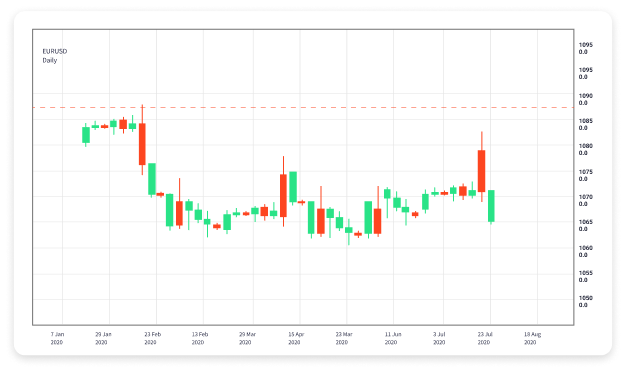
Understanding Forex Trading Through Practical Examples
In the world of finance, few markets are as dynamic and captivating as the foreign exchange (forex) market. With a daily trading volume exceeding $6 trillion, forex trading offers immense opportunities for traders. By exploring specific examples and practical applications, we can better understand how forex trading works. Whether you’re a novice or an experienced trader, this guide will shed light on various aspects of forex trading, from basic concepts to advanced strategies. For more information, consider exploring forex trading example Trading Broker UZ, a trusted partner for your trading journey.
What is Forex Trading?
Forex trading involves buying and selling currencies on the foreign exchange market. Unlike stock trading, where you buy shares of a company, forex trading involves exchanging one currency for another. The primary goal is to profit from the fluctuations in currency exchange rates. Traders can operate 24 hours a day, five days a week, which adds to the market’s appeal.
Basic Concepts of Forex Trading
Currency Pairs
In forex trading, currencies are traded in pairs. Each pair consists of a base currency and a quote currency. For instance, in the EUR/USD pair, the euro (EUR) is the base currency, and the US dollar (USD) is the quote currency. If the EUR/USD pair is trading at 1.20, it means 1 euro can be exchanged for 1.20 US dollars.
Bid and Ask Prices
The bid price represents the amount a trader is willing to pay for a currency, while the ask price is the price at which a trader is willing to sell. The difference between the bid and ask price is known as the spread, which is a crucial concept for forex traders. A narrow spread indicates lower costs for traders, while a wider spread signifies higher costs.
Pips and Lots
A pip is the smallest price change in a currency pair, typically measured to four decimal places. For example, if the EUR/USD moves from 1.2000 to 1.2001, it has changed by one pip. Lots refer to the size of a trade, where a standard lot is 100,000 units of the base currency. There are also mini lots (10,000) and micro lots (1,000) available for trading on various platforms.
Forex Trading Example: A Step-by-Step Guide
Let’s delve into a practical example to illustrate the forex trading process:
Scenario
Suppose you believe the euro will strengthen against the US dollar due to a promising economic report from the Eurozone. You decide to buy 1 standard lot (100,000 euros) of the EUR/USD pair when it is trading at 1.2000.
Opening the Trade
You place a buy order for 1 lot of EUR/USD at 1.2000. Since you are buying euros, you will need to invest 120,000 USD (1 lot * 1.2000) to open this position.
Price Movement
As predicted, the euro strengthens, and the EUR/USD pair rises to 1.2100 within a few hours. You decide it’s time to take your profit. To close the trade, you sell 1 lot of EUR/USD at the current market price of 1.2100.
Calculating Profit
Your profit is calculated based on the difference between the closing price and the opening price, multiplied by the lot size. The formula is as follows:
Profit = (Closing Price - Opening Price) * Lot Size
Profit = (1.2100 - 1.2000) * 100,000 = 1,000 USD

In this scenario, you made a profit of 1,000 USD on this trade. However, it’s important to remember that forex trading involves risks, and losses can also occur if the market moves against your position.
Risk Management in Forex Trading
Effective risk management is crucial for success in forex trading. Traders should never risk more than they can afford to lose. Here are a few strategies to manage risk:
Setting Stop-Loss and Take-Profit Orders
Stop-loss orders automatically close a position at a predefined price to limit potential losses. Take-profit orders, on the other hand, secure profits once the price reaches a specified level. These tools help traders manage their risk effectively while allowing them to focus on other opportunities.
Position Sizing
Determining the correct position size is vital. A common rule of thumb is to risk only 1% to 2% of your trading capital on a single trade. Using position sizing calculators can assist in determining the appropriate lot size based on your account balance and risk tolerance.
Developing a Trading Strategy
Having a well-defined trading strategy is essential for success in the forex market. Some popular strategies include:
Scalping
This strategy involves making numerous small trades throughout the day to capitalize on minor price movements. Scalpers typically hold positions for a few seconds to a few minutes.
Day Trading
Day traders open and close positions within the same day. They aim to profit from short-term price fluctuations and avoid overnight market risks.
Swing Trading
Swing traders hold positions for several days or weeks, aiming to profit from medium-term price trends. This strategy requires a keen understanding of market movements and technical analysis.
Position Trading
Position traders hold trades for months or years, focusing on long-term trends and fundamentals rather than short-term market fluctuations.
Analyzing Market Trends
Technical and fundamental analysis are two primary methods for analyzing forex markets:
Technical Analysis
Technical analysts study price charts and indicators to forecast future price movements. Common tools include trend lines, moving averages, and oscillators (e.g., RSI, MACD).
Fundamental Analysis
Fundamental analysts focus on economic indicators, interest rates, and geopolitical events that can influence currency values. Understanding economic calendars and major reports (like GDP, employment reports) is crucial for this analysis.
Conclusion
Forex trading presents substantial opportunities for traders willing to learn and adapt. By understanding the basic concepts, applying effective risk management, and developing a solid trading strategy, traders can navigate the complexities of the forex market. As with any investment, education, practice, and discipline are key to achieving success in forex trading.
